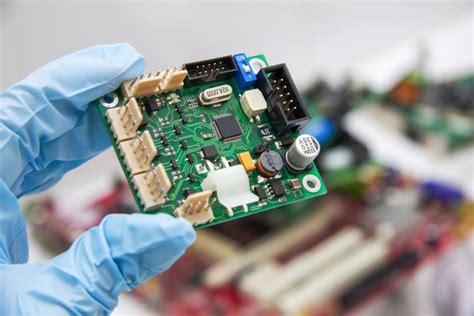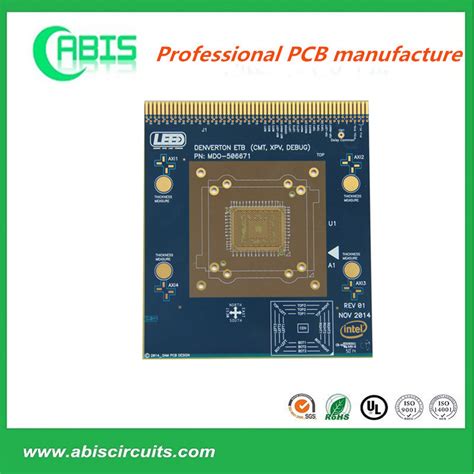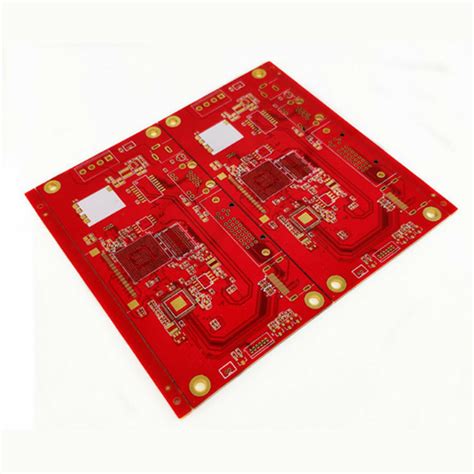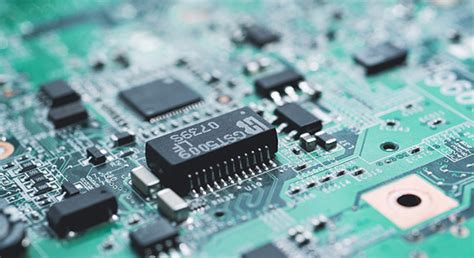Mastering Circuit Card Assembly Design: A Comprehensive Guide
Key Takeaways
When embarking on the journey of pcb assembly and mastering the art of pcba, it’s essential to recognize the intricate interplay of various components involved in circuit card assembly design. Understanding the basic principles of how components function together can significantly enhance the efficiency and reliability of your designs. A well-structured circuit card assembly not only increases performance but also leads to simplified troubleshooting processes. From selecting high-quality base materials to integrating advanced technologies, ensuring that every element aligns with industry standards is crucial. Adopting best practices in layout design can mitigate issues that often arise during assembly, further reinforcing overall reliability. Additionally, innovative solutions such as automated assembly processes and smart materials are transforming traditional designs, paving the way for more efficient production methods. Recognizing these key takeaways is vital for anyone looking to excel in this dynamic field, as they lay the foundation for creating robust and effective pcb assemblies that stand the test of time.
Introduction to Circuit Card Assembly Design
Circuit card assembly design is a fundamental aspect of electronics manufacturing that involves the integration of various electronic components onto printed circuit boards (PCBs). This process, often referred to as pcb assembly, encompasses a variety of tasks, including layout design, component selection, and soldering techniques. To effectively master the art of circuit card assembly, it’s crucial to understand how these elements interact to create a functional and reliable end product.
The design process begins with the creation of schematic diagrams that illustrate the electrical connections between components. These diagrams are then translated into pcba layouts, where physical placement and routing are critical. Using advanced software tools, designers can optimize the arrangement of components to minimize electromagnetic interference and enhance signal integrity.
In addition to technical skills, familiarity with industry standards such as IPC-A-600 for printed boards or IPC-2221 for designs is essential. Understanding these standards ensures that assemblies meet stringent quality requirements, ultimately leading to more durable products.
| Component | Description | Importance |
|---|---|---|
| Solder Masks | Protects against solder bridging | Essential for functionality |
| Surface Finish | Affects solderability and corrosion resistance | Critical for long-term reliability |
| Design Rules | Guidelines for clearance and component placement | Ensures manufacturability |
This table summarizes key elements in circuit card assembly design that significantly impact both performance and manufacturing efficiency. By combining theoretical knowledge with practical application, designers can produce innovative pcb assemblies that not only meet but exceed market expectations. Understanding these principles is vital in an ever-evolving technological landscape where performance and reliability remain paramount.
Essential Components of Circuit Card Assemblies
Understanding the essential components of circuit card assemblies (PCBA) is crucial for anyone venturing into the realm of circuit card assembly design. These components serve as the foundation for creating functional and reliable electronic devices. At the core, you’ll find the printed circuit board (PCB), which acts as the structural backbone for mounting various electronic parts. The selection of materials used in the PCB—such as epoxy, fiberglass, and copper—can significantly impact performance.
Next, components like resistors, capacitors, and integrated circuits are soldered to the PCB to create electrical pathways and functionality. Each type of component fulfills a specific role; for example, resistors limit current flow while capacitors store energy temporarily. When designing a PCBA, it’s important to choose high-quality components that not only meet electrical specifications but also align with reliability standards.
“Investing in superior materials and components during the design phase can save time and costs in later stages.”
Additionally, connectors play a vital role by allowing external connections to other parts of an electronic system. Proper layout considerations are essential here to minimize interference and ensure ease of assembly.
In sum, mastering these essential components helps pave the way towards designing efficient circuit card assemblies that meet both performance criteria and operational demands. The interdependencies between these elements should not be underestimated; each decision made during the design process profoundly influences both functionality and reliability in real-world applications.
Best Practices for Designing Efficient Circuits
Designing efficient circuits for pcb assembly requires a comprehensive understanding of the interplay between component layout, signal integrity, and thermal management. One of the key practices involves optimizing the pcba layout by minimizing trace lengths and strategically placing components to reduce electromagnetic interference. Utilizing advanced design software can significantly aid in visualizing circuit paths and pinpointing potential challenges before actual production begins. Another critical aspect is to ensure that components are selected based on their performance characteristics, power ratings, and footprint compatibility. Adopting a systematic approach to component placement can lead to improved manufacturing efficiency and reliability in the final product. Additionally, incorporating thorough testing protocols throughout the design phase can help identify and rectify issues promptly, thereby enhancing overall circuit performance. This attention to detail not only results in cost-effective solutions but also contributes to assembling circuit boards that exhibit long-term durability and high operational efficiency.
Techniques for Ensuring Reliability in Assembly
Ensuring reliability in pcb assembly (or PCBA) is crucial for the performance and lifespan of electronic devices. One essential technique involves meticulous attention to the selection of high-quality components. By using components that are not only rated for the intended application but also have proven reliability records, designers can significantly reduce failure rates. Another vital approach is to implement thorough testing protocols during and after the assembly process. This includes visual inspections, automated optical inspections (AOI), and functional testing to catch any potential defects early. Additionally, adopting a robust design methodology that incorporates redundancy for critical pathways can enhance the overall reliability of the circuit card assemblies. By ensuring that traces and vias are adequately designed to handle potential stressors, as well as considering thermal management strategies, designers can help mitigate the risk of failure due to overheating or electrical stress. Furthermore, adhering to established industry standards such as IPC-600 for pcb assembly quality can provide a solid framework for achieving consistent and reliable results, making every assembly a step towards excellence in the ever-evolving world of electronic manufacturing.
Innovative Solutions in Circuit Card Design
In the realm of pcb assembly, innovation plays a pivotal role in enhancing both the performance and efficiency of designs. One of the foremost strategies includes the implementation of advanced materials such as high-frequency laminate and flexible substrates, which contribute to increased signal integrity and reduced electromagnetic interference. Another notable advancement is the use of automation in pcba processes, enabling faster production times and greater precision in component placement. Techniques such as design for manufacturability (DFM) allow engineers to create circuit card assemblies that are easier to produce, minimizing errors during the assembly process.
Additionally, leveraging simulation software during the pcb assembly design phase can uncover potential issues before physical prototypes are built, saving time and resources. Thermal management solutions are also increasingly vital; incorporating heat sinks or thermal vias can ensure that components maintain optimal operating temperatures, prolonging their lifespan. Furthermore, adopting a modular design approach allows for easier upgrades and repairs, ultimately reducing waste. By staying informed about these innovative solutions, designers can significantly improve the reliability and efficiency of their circuit card assemblies, creating robust products that meet today’s demanding technological requirements.
Troubleshooting Common Issues in Circuit Card Assembly
Inevitably, challenges may arise during the pcb assembly process that can jeopardize the performance and reliability of the final product. Understanding how to effectively troubleshoot these issues is crucial for any designer or engineer involved in pcba production. Common problems include misalignment of components, soldering defects, and issues related to component compatibility. For instance, misalignment can result from improper placement techniques or insufficient inspection protocols during assembly. To mitigate such issues, implementing stringent quality control measures and utilizing advanced alignment technologies is essential. Furthermore, soldering defects like cold solder joints or bridging can often be addressed by refining the soldering techniques utilized and ensuring that appropriate materials are used. It’s also vital to stay informed about component compatibility; a mismatch can lead to significant performance issues down the line. By employing systematic troubleshooting approaches and leveraging best practices throughout the circuit card assembly, professionals can not only rectify existing problems but also enhance overall design integrity and functionality. Thus, being proactive in recognizing potential risks during the pcba process lays a solid foundation for achieving reliable circuit card assemblies that meet industry standards.
Case Studies: Successful Circuit Card Assembly Projects
In the realm of pcb assembly, real-world projects often serve as invaluable learning tools for aspiring designers. One notable case is the development of a high-performance consumer electronics device, where a pcba was meticulously designed to accommodate numerous advanced features while maintaining compactness. The project required a keen understanding of both the electrical requirements and the physical constraints, pushing the team to innovate with new layout strategies and component placements that optimized space and reliability. Through iterative simulations and prototyping, they successfully reduced signal interference—a common issue in complex circuit card assemblies—and enhanced overall performance.
Another compelling example can be found in the automotive industry, where a pcb assembly was developed for an electric vehicle’s battery management system. The engineers faced challenges related to thermal management and robustness under varying environmental conditions. By analyzing temperature data during testing phases, they implemented advanced cooling systems within the assembly design that significantly increased the reliability of the pcba under high-load scenarios. This project not only highlighted best practices in thermal analysis but also demonstrated how critical attention to detail in design can lead to successful outcomes.
These case studies illustrate that successful circuit card assembly projects rely heavily on adopting best practices, innovative solutions, and a rigorous testing protocol. The lessons learned from these experiences reinforce the importance of adaptability and thorough research when navigating the complexities of circuit card assembly design.
Future Trends in Circuit Card Assembly Design
As technology advances, the field of pcb assembly and pcba design is experiencing a remarkable transformation. One prominent trend is the shift towards smaller, lighter, and more compact designs that require innovative approaches to circuit card assembly. Miniaturization is not just a goal but a necessity, especially driven by the demand for portable devices. Additionally, the integration of smart technologies into circuit card assemblies is on the rise. These advancements allow for enhanced functionality and capabilities within limited space, often including features such as Internet connectivity which necessitates sophisticated design techniques.
Another significant trend is the increasing focus on sustainability and reducing environmental impact. Designers are exploring new materials and processes that promote eco-friendliness while maintaining efficiency in pcba production. The adoption of lead-free soldering processes, for instance, not only aligns with global regulations but also caters to consumer preferences for sustainable products.
Moreover, automation in pcb assembly is gaining traction. The implementation of smart manufacturing techniques ensures precision and speed in production while minimizing human error. These automated systems can analyze data in real-time to optimize workflows, leading to more reliable circuit card assemblies.
Lastly, we are witnessing a rise in collaborative design processes through advanced software tools that allow multiple stakeholders to participate efficiently from different locations. This trend is reshaping how teams collaborate on complex projects and enables quicker responses to market changes.
In essence, the future of circuit card assembly design looks promising with these evolving trends driving innovation and efficiency in the landscape of modern electronics.
Conclusion
In the journey of mastering circuit card assembly design, understanding the nuances of pcb assembly is crucial. By focusing on the essential components that make up successful pcba processes, designers can craft assemblies that are not only efficient but also resilient against common electronic challenges. It’s important to implement best practices and leverage innovative solutions to navigate the complexities involved in designing reliable circuitry. Through thoughtful design strategies and thorough testing, engineers can ensure that each assembly meets stringent quality standards, paving the way for long-lasting performance in various applications. As technologies continue to evolve, staying abreast of future trends in circuit card assembly will further enhance the ability to create advanced assemblies that keep pace with industry demands. Emphasizing proper troubleshooting techniques will empower professionals to address potential issues swiftly, enhancing both productivity and innovation in the realm of pcb assembly.
FAQs
What is PCB assembly?
PCB assembly, also known as PCBA, is the process of soldering electronic components onto a printed circuit board (PCB) to create a fully functional electronic device.
Why is the design of circuit card assemblies important?
The design of circuit card assemblies is crucial as it directly impacts the efficiency and reliability of electronic circuits. A well-designed pcb assembly ensures that components are optimally placed, which can reduce electrical interference and enhance performance.
What are common materials used in PCB assembly?
Common materials include copper for traces, FR-4 for substrates, and various types of solder for attaching components. The choice of material significantly affects the durability and performance of the pcba.
How can I ensure reliability in my circuit card assemblies?
To ensure reliability, implement best practices during the design phase, such as using appropriate component ratings, adhering to thermal management guidelines, and performing regular testing throughout the assembly process.
What should I consider when troubleshooting a PCBA issue?
When troubleshooting a pcb assembly, consider checking for common issues such as cold solder joints, incorrect component placements, or damaged traces. Tools like an oscilloscope or multimeter may help identify problems effectively.







